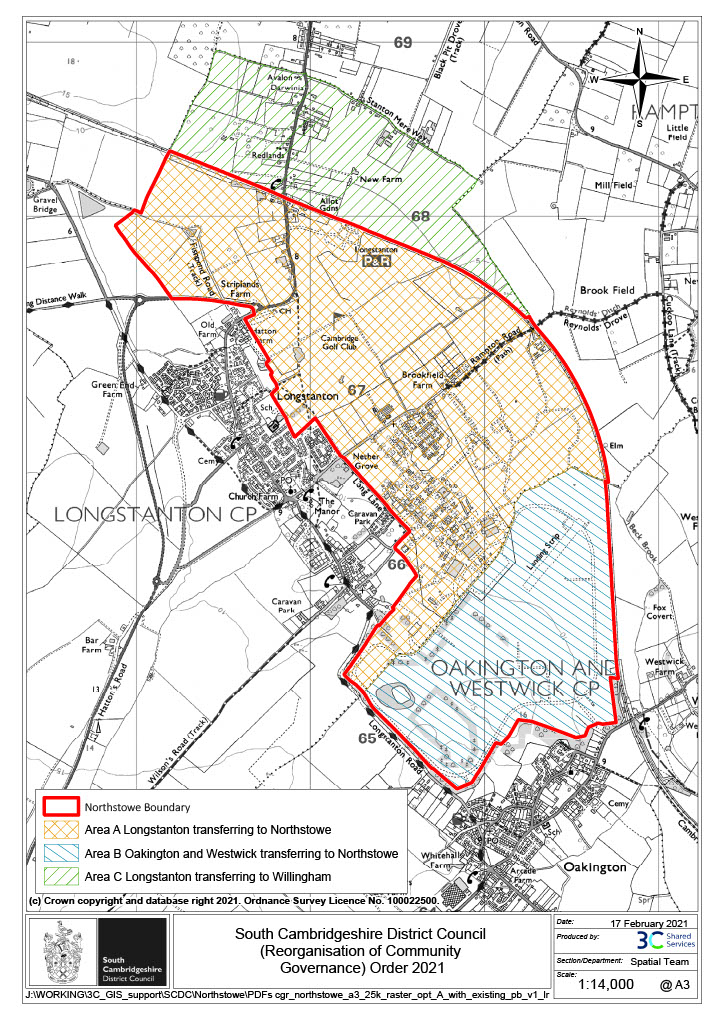The Black Death in Cambridgeshire – by HAE Stroude March, 2010
The information on the Black Death below is based upon the following book:
The Black Death 1346 – 1353 – The Complete Historyby Ole J. Benedictow ISBN 978 1 84383 214 0.
The author has used many references and in due course we will add on details of the references he used for his local information. This is just an introduction. This subject is important for understanding the histories of Longstanton and District. It is probable that the conservation areas of Longstanton and Oakington & Westwick are the end result of this devastating epidemic. With a significant reduction in population, previously ploughed land was turned over to grazing (primarily sheep), and the remains of the old ploughing techniques were preserved as the ridge and furrow we can still see today.
Fortunately for historians Crowland Abbey held manors in Oakington, Dry Drayton and Cottenham. It is the Crowland Abbey records that have provided information on the Black Death mortality rates on these local manors. Although we cannot say for certain, it is reasonable to assume that mortality in other local villages, like Longstanton, would have been of a similar magnitude.
Background History
The Black Death entered the British Isles in Weymouth, Dorset probably around the 8th May 1348. This event was described in the Grey Friars’ Chronicle:
“In this year, in Melcombe (now Weymouth), in the county of Dorset, a little before the Feast of St John the Baptist, two ships, one of them from Bristol, came alongside. One of the sailors brought with him from Gascony the seeds of the terrible pestilence and through him the men of the town of Melcombe were the first in England to be infected.”
Ole J. Benedictow provides much detail about the epidemiological process of the disease and further detail on this may be provided on the website in future. In Weymouth, it was about August before the presence of the Black Death became apparent. Unfortunately, from the time the infected sailor arrived in Weymouth to the time that the disease was recognised, the goods from the original ship infected had been dispersed and the ship from Bristol had returned home via the West Country. Consequently infected ships (harbouring rats and fleas), and goods (harbouring fleas), spread the disease east and west from Weymouth. Smaller vessels transported goods up rivers and estuaries. The spread of the Black Death via waterways was rapid – much faster than the spread by road. The newly imported rats and their fleas infected the indigenous rat population and the disease was out of control. Winter would cause a temporary setback to the disease but it would continue its devastating progress as warmer spring conditions emerged.
The Black Death entered the heartlands of England via the eastern coast. This was illustrated by the fact that it invaded Cambridgeshire several months earlier than Oxfordshire and Buckinghamshire. On the manors of Crowland Abbey (Oakington, Dry Drayton and Cottenham) the onslaught began in October 1348. Other Cambridgeshire villages may have been infected before the Crowland Manor lands, but information would not necessarily have been recorded or survived. One way of “seeing” the presence of the Black Death is, the author suggests, by looking at the records for institutions (appointments) of new parish priests. The author goes into much detail about how the presence and spread of the Black Death can be seen by looking at the appointments of new parish priests. By administering the last rites the parish priest was dangerously exposed to the rat fleas from the first death. Surviving records showing institutions provide a clear picture of the presence of the Black Death. The author explains that pre-Black Death institution rates were significantly lower than the rates seen during the Black Death epidemic. The figures below are taken from this book and show the recorded institutions in Cambridgeshire for 1349, just a few months after the arrival of the disease.
Institutions of new parish priests in Cambridgeshire in 1349
Jan – 0; Feb – 1; Mar – 1; Apr – 6; May – 6; Jun- 18; Jul – 24;
Aug- 12; Sep-9; Oct -6; Nov – 3; Dec – 4
Note: There was a time lag between the infection and death of the parish priest and the institution of a new one. This delay was about 4 – 6 weeks but this could have increased as the disease reached epidemic levels, due to a shortage of suitable candidates. The author notes that the onset of the rise in institutions in Cambridgeshire seems to start rather late to really accord with the onset of the disease in Cambridgeshire in October 1348. The author suggests that the scholar recording the information may not have included institutions which occurred late in 1348. The low number of institutions early in 1349 may have reflected the fact that the disease epidemic subsided during late November and December due to the onset of cold weather.
Here ends the introduction to the Black Death in Cambridgeshire. More details on mortality on the Crowland Abbey lands will follow. What is of interest is that the Black Death is shown to have arrived at these villages ahead of transmission of the Black Death overland to other parts of the country. This suggests that in accordance with the author’s findings, the Black Death most probably arrived at these manors via goods that were originally transported by ship. Perhaps the fenland waterways and Beck Brook were instrumental in the early infection of Oakington; Dry Drayton and Cottenham.
